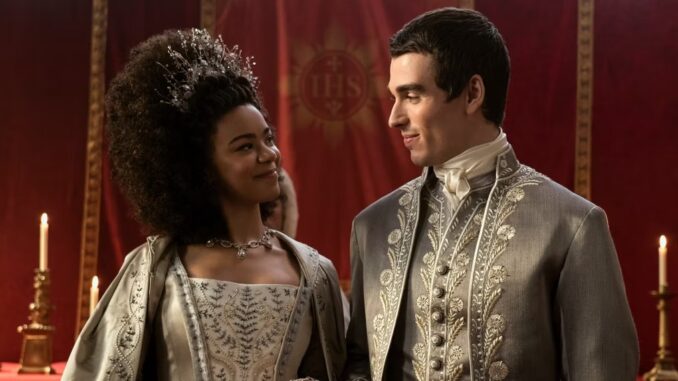
Bridgerton and Queen Charlotte: A Bridgerton Story has a problem. There’s no dancing around the subject. It is a problem that really didn’t need to exist, and, yet, there it is, bearing its ugly head over both shows. In their joint effort to create a diverse version of Regency Britain, the two Netflix series have fumbled with the theme of race. Instead of merely incorporating people of color — and, much more prominently, Black people — into its universe, accepting themselves as wish-fulfillment, the shows have chosen to create a parallel universe in which racial recovery became part of the British aristocracy overnight. However, in choosing to explain the presence of POC in its universe, the Bridgerton franchise put itself in a pickle. More specifically, it puts itself in the position of dealing with questions of racism and colonialism that neither of its shows has the maturity to explore.
The issues began with a single line spoken by Lady Danbury (Adjoa Andoh) in Bridgerton Season 1: “We were two separate societies divided by color until the king fell in love with one of us”. Viewers that had up to this point simply accepted the presence of Black and Brown characters such as Lady Danbury herself and the Duke of Hastings (Regé-Jean Page) found themselves having to wonder about how racism works in the Bridgerton universe. And, let’s face it, no one’s watching Bridgerton to ponder on complicated social issues: we’re watching it to lose ourselves in sexy Regency romances and pretty clothes. But, from the moment showrunner Chris Van Dusen decided to put those words in Lady Danbury’s mouth, the damage was done. Audiences were left to wonder about how exactly racism works in the Bridgerton-verse, and whether slavery in the colonies was also abolished when “the king fell in love with one of us”.

‘Bridgerton’ Season 1 Created a Problem that Shouldn’t Even Exist in the First Place
Granted, we said that viewers simply accept the presence of characters of color in the Bridgerton aristocracy, but that isn’t the whole truth. There were, of course, those that were unhappy with the fact that Black people had been chosen to play dukes, lords, and even monarchs in the adaptation of Julia Quinn’s series of novels. This kind of racist uproar is sadly common whenever a non-white actor is chosen to play a role that is traditionally perceived as white, whether it’s the queen of England or a magical creature such as a mermaid. These comments shouldn’t be listened to with anything but derision: unless a work of fiction intends on dealing with issues of race at a certain time period or any other topic that absolutely commands historical realism, there is no reason for it not to cast actors of color. This not only opens up a whole new range of possibilities for performers that are usually restricted to certain kinds of roles but also widens the horizons of viewers of color, who are suddenly able to imagine themselves in more diverse scenarios.
Bridgerton, however, decided to lend an ear to these racist “concerns”. It did so by choosing to explain the existence of wealthy, aristocratic Black people in its universe, including its version of Queen Charlotte (Golda Rosheuvel). Holding onto a theory that Queen Charlotte was of Moor heritage and, therefore, mixed race, the show proposes a universe in which racism ended in British society because its ruler fell in love with a Black woman. This triggers a series of questions surrounding how race is perceived in said universe. Was slavery in the colonies also declared over once the king fell in love with Queen Charlotte? What exactly did Lady Danbury mean by “two separate societies divided by color”? Are we talking about two different aristocracies or something like the American South under Jim Crow? What effects does this former racial division still have in the society portrayed in the show?
Bridgerton Season 1 tackles exactly zero of these questions. Season 2 doesn’t fare any better. As a matter of fact, it adds to the problem by introducing an Indian lead, Kate Sharma (Simone Ashley), and, at the same time, mentioning the existence of colonies in India. This leads us to wonder whether Kate is a victim of British colonialism or an active agent of her people’s oppression. Combined with Season 1’s comments about two separate societies, it raises questions of whether Kate’s ancestors belonged to the same society as Lady Danbury or whether they received a better, more egalitarian treatment from the white aristocracy.
